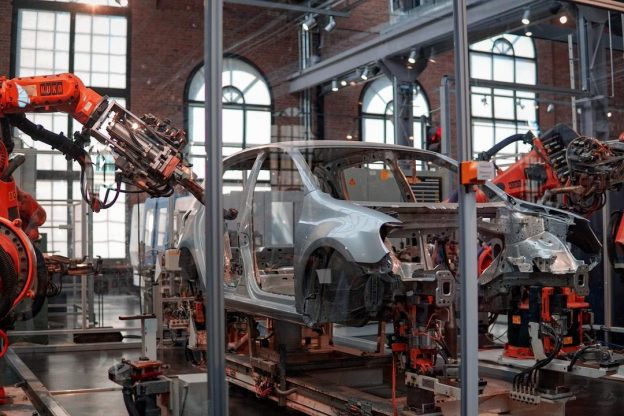How Can Robots Help Both Small and Large Companies?

Robots are becoming an increasingly common fixture in factories and other industrial settings. Robots have been shown to help companies large and small run more efficiently and make more money. Their abilities to automate tasks and take on repetitive work have led to an increase in production and profit. For small businesses, this can mean the ability to keep up with the larger businesses and compete in a global market. For large businesses, robots can mean the ability to have a smaller human workforce that is just as productive. In either case, the use of robots can lead to a more profitable and successful company.
In general, robots can free up human employees to work on more important tasks. For one robotic process automation example, robots can be used to process orders, manage inventory, and ship products. This can help businesses to run more efficiently and increase their productivity. Continue reading to learn more about robotic process automation and some of its benefits for modern industry.
Robotic Process Automation Defined
Robotic process automation (RPA) is the application of technology that allows employees in a company to configure computer software, or a “robot,” to capture and interpret the actions of employees in order to automate those tasks. RPA can help companies of all sizes. For small businesses, RPA can automate simple, repeatable tasks, such as data entry, which can free up employees to focus on more complex tasks. For larger companies, RPA can help to manage and monitor multiple business processes across different departments. RPA can also help companies to comply with regulations and audit requirements.
Benefits for Small Businesses

Small businesses are the backbone of the American economy. They account for more than half of all private-sector jobs and more than 60 percent of new jobs created in the past decade. They are also the most likely businesses to fail. This is where robots can come in and help. While they have traditionally been used in larger companies, their benefits are now being realized by small businesses as well. For example, one benefit of using robots is that they can help small businesses scale up or down as needed. If a business is experiencing a slowdown, for example, they can reduce the number of robots they are using without having to lay off employees. This flexibility can be extremely helpful in times of uncertainty.
Read Also: Outdoor Greenery Looks Real with Faux Plants
How Robots Can Help Small and Large Companies
Robots are becoming an increasingly important part of the workforce, and small and large companies alike are starting to realize the benefits of using them. Here are a few ways that robots can help companies of all sizes:
Increased Efficiency – Robots can be used to automate tasks. This can include tasks such as welding, fabricating, assembling, and packaging. By automating these tasks, companies can reduce the amount of time it takes to complete them. In some cases, this can lead to a significant increase in efficiency.
Improved Quality – Robots can help improve the quality of products and services. They can also help reduce defects and improve consistency.
Increased Capacity – Robots can help companies increase their production capacity. This can help them meet demand and grow their business.
Improved Safety – Robots can help improve safety in the workplace. By performing complex or dangerous tasks, robots can help reduce the number of accidents and injuries.
Increased Flexibility – Robots can help companies be more flexible and adaptable. They can help them respond quickly to changes in the market and meet the needs of customers.
Improved Communication – Robots can help improve communication within companies. By automating tasks and processes, companies can create a common language for communication. This can help break down communication barriers and improve communication between departments.
Improved Customer Service – Robots can also help to improve customer service. Automated chatbots can be used to answer customer questions and resolve issues. This can help to improve customer satisfaction and reduce the amount of time that employees need to spend on customer service.
Cost Savings – Robots can help companies save money on labor costs. They can also help reduce the need for human workers in certain areas, which can lead to cost savings. The cost of implementing robots into a business depends on the type of robot and the tasks it will be performing. Generally, the more complex the task, the more expensive the robot will be. However, robots can often be reused for multiple tasks, which can help reduce the cost of implementation.
Overall, robots can help small businesses to improve their productivity, customer service, and reduce their costs. This can help them to be more competitive and successful in the marketplace.




